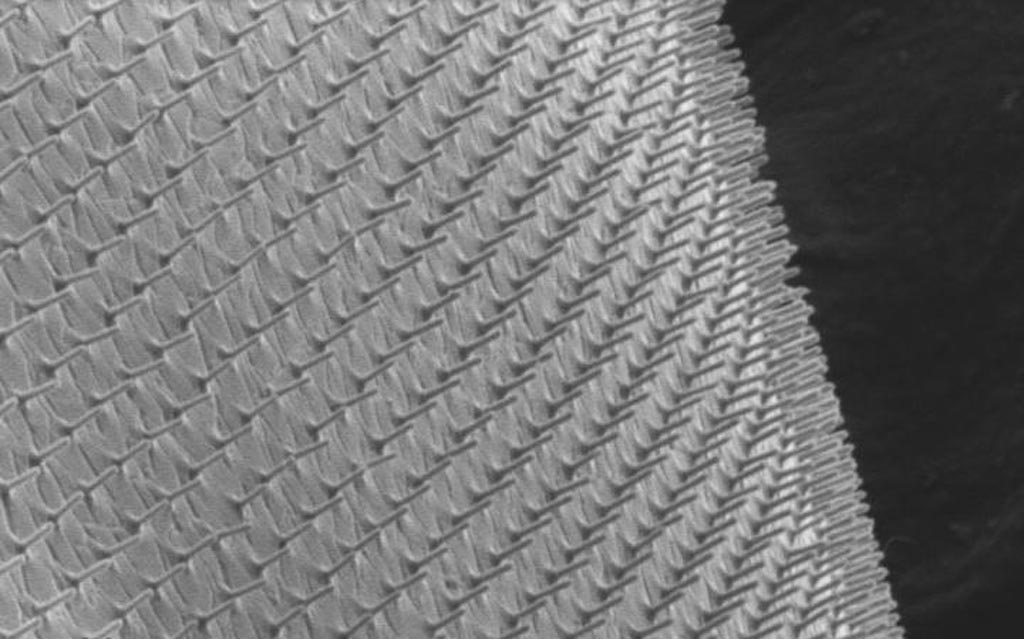Nanoneedle Bio-patch Provides Minimally Invasive Drug Delivery
By LabMedica International staff writers
Posted on 20 Nov 2018
A flexible bio-patch made from silicon nanoneedles embedded in a thin layer of elastomer was shown to deliver exact doses of biomolecules to cells and tissues while minimizing discomfort to the wearer.Posted on 20 Nov 2018
Vertically ordered arrays of silicon nanoneedles – due to their nanoscale dimension and low cytotoxicity – are capable of minimally invasive nanoinjection of biomolecules into living biological systems such as cells and tissues. Nanoneedle bio-patches are usually fabricated on a bulk silicon wafer that is able to withstand the high temperatures and corrosive chemicals employed in standard nanofabrication processes. These rigid, flat, and opaque silicon wafers do not conform favorably with the soft, curvilinear, and optically transparent biological systems for which they are intended.

Image: Silicon nanoneedles embedded in a stretchable and translucent elastomer patch that can be worn on the skin to deliver exact doses of drugs directly into cells (Photo courtesy of Purdue University).
To improve this situation, investigators at Purdue University (West Lafayette, IN, USA) developed a unique methodology that enabled construction of vertically ordered silicon nanoneedles on a thin layer of elastomer patch that could flexibly and transparently interface with biological systems.
The investigators reported in the November 9, 2018, online edition of the journal Science Advances that this methodology allowed the heterogeneous integration of vertically ordered silicon nanoneedles with a thin layer of elastomer patch, which could provide a certain degree of mechanical flexibility, optical transparency, and cell and tissue compatibility.
"This means that eight or nine silicon nanoneedles can be injected into a single cell without significantly damaging a cell. So we can use these nanoneedles to deliver biomolecules into cells or even tissues with minimal invasiveness," said senior author Dr. Chi Hwan Lee, assistant professor in of biomedical engineering at Purdue University. "This nanoneedle patch is not only flexible but also transparent, and therefore can also allow simultaneous real-time observation of the interaction between cells and nanoneedles."
Related Links:
Purdue University













